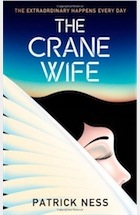Do it! Anyway, I asked if she would be willing to do a guest post, and in response she has sent me a review of the book, "Strands of Bronze and Gold" by author Jane Nickerson ( http://www.jane-nickerson.com/ ).
So, without further ado, here we have it! Enjoy, and do check out Naz's blog. And if you follow, I'll
give you a metaphorical biscuit. Hugs!
Love,
Book Worm (Nerdy Birdy)
Strands of Bronze and Gold by Jane Nickerson

Rating:

Review:
I was quite intrigued by the blurb when I picked up this book. Being from India, I am not familiar with the tale of Bluebeard. So, I dove into this book not knowing what to expect. I didn’t like the way the story started. Sophia seemed a bit of an airhead, who only cared for pretty clothes and handsome men. Also, there was an awful lot of descriptions. I understand that Sophia, when she sees such opulence and luxury, is overwhelmed, but that doesn’t mean she has to describe every tapestry and fabric she claps eyes on. At one point, I even thought of skipping to the end, which is something I never do. I think, more than anything, what turned me off during the initial part of the story was that the characters seemed a little flat and one-dimensional. Sophie was the naïve Yankee girl. Monsieur de Cressac was the godfather with ulterior motives. There were characters placed here and there, like Ling and Garvey, who were meant to unsettle Sophie. Mrs. Duckworth was the comforting point for her in the big, scary mansion. The characters did what they were supposed to do, but there was nothing more, no depth to them. But don’t let that bring you down because the book does get better. As the story progresses, we see Sophie grow as a character. She begins to notice the strange things at WyndrivenAbbey and the stranger mood swings of Monsieur de Cressac. Though at first she is attracted to his handsome looks and immense riches, she soon starts to look past his charming façade at the unpleasantness lying underneath. From there, the story swiftly becomes more interesting. As we move from one chapter to another, we begin to anticipate the next horrible thing that is going to happen at the Abbey. We also begin to learn more about de Cressac’s history which sheds light upon his true character. I enjoyed reading about the supporting characters especially, Charles, Talitha, Gideon and Odette, but my favorite was de Cressac himself. The way his character was carved out was particularly good. Before Sophie and de Cressac become engaged, he was a little well-behaved, but you can notice hisdemeanour begin to change after the engagement. It is as if once he was sure that Sophie was firmly in his hands, he could let his nature show. There is one particular scene in the “folly” thatseriously scared the life out of me. The best part about deCressac is that he seems realistic. He doesn’t seem like a macabre character one might only read about in a book or watch in a movie. We can imagine the things he does (excluding the murdering part, of course) actually happening in real life. Finally, I have to commend the author on writing an ending that didn’t turn the dead wives into gory, horror movie props, butrather focused on the sick nature of de Cressac.
Cons:
•
Initially bland characters
•
Slow-paced for the first few pages
Pros:
•
A gem of a character in Bernard de Cressac
•
A strong heroine
•
Great supporting characters
•
Descriptions (I decided to put this in the pros and not the cons because although initially the long descriptions annoyed me, they do contribute to the overall atmosphere of the story)
•
Solid climax
Verdict:
With an interesting plot, well-drawn characters and a satisfying end, Strands of Bronze and Gold is definitely worth reading more than once. I really liked it.
